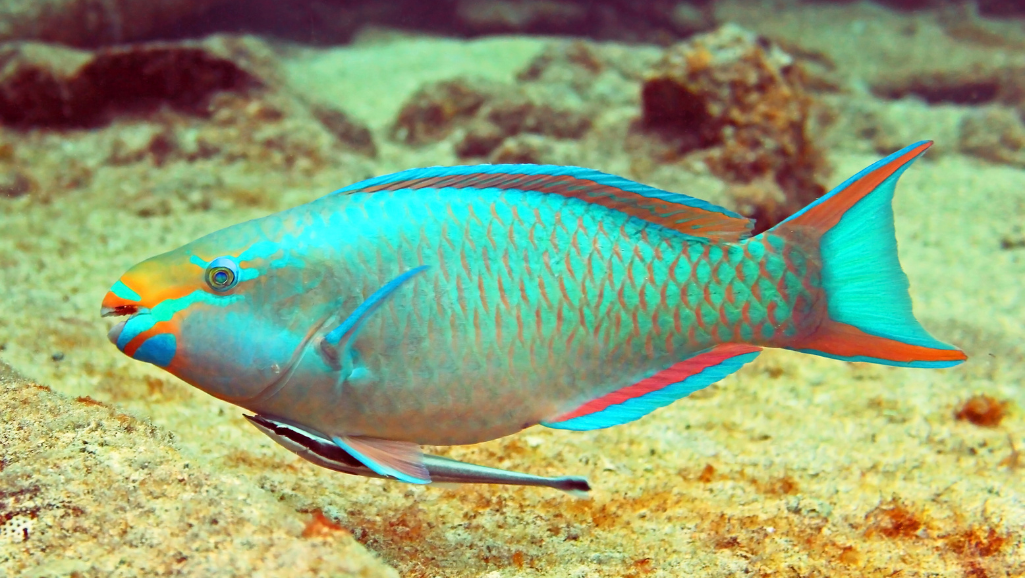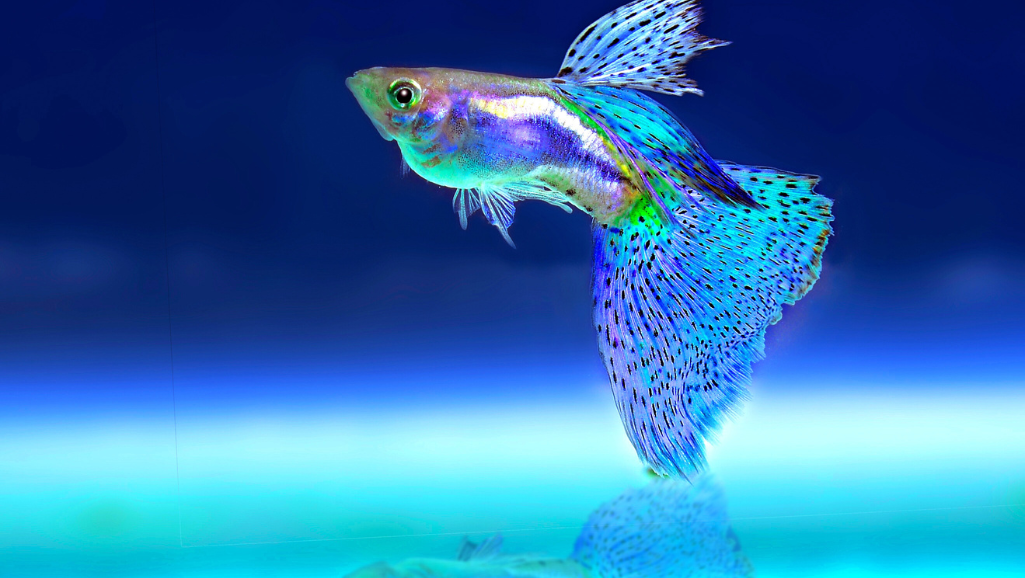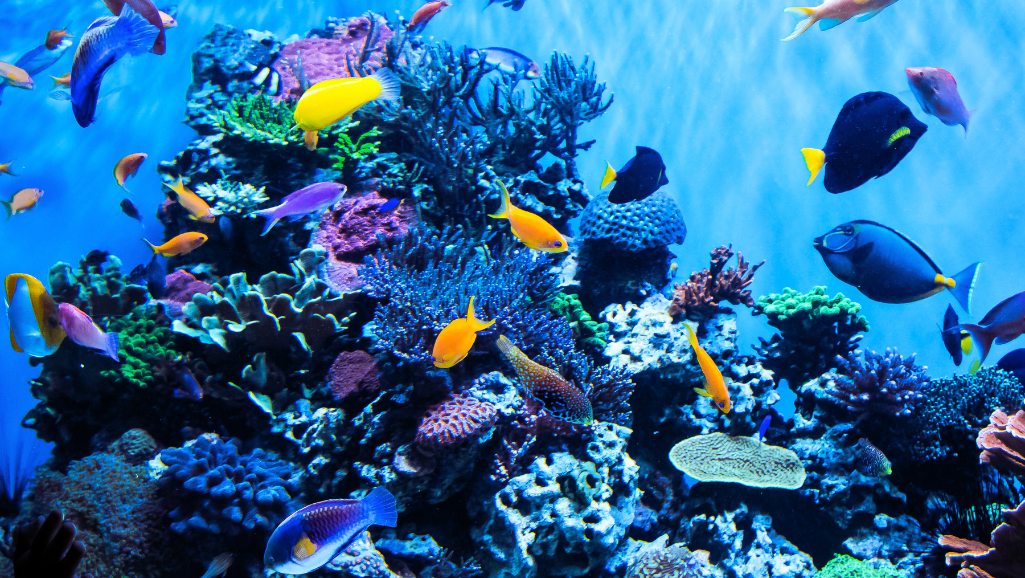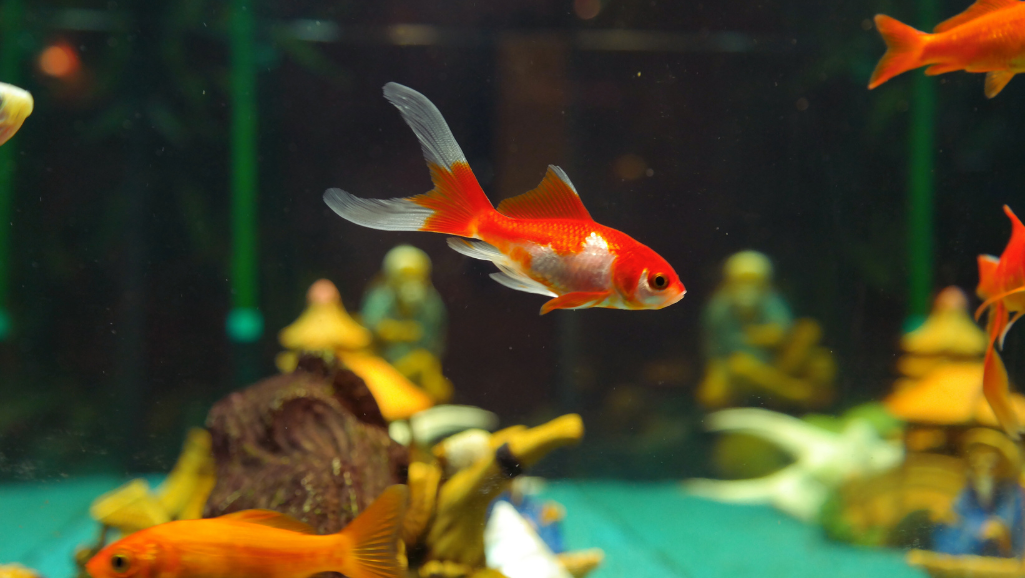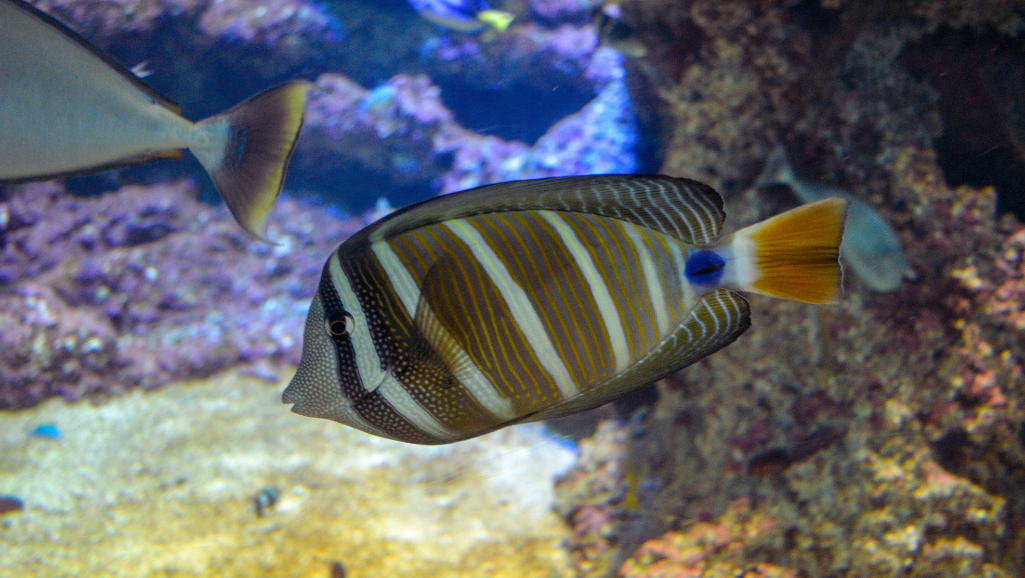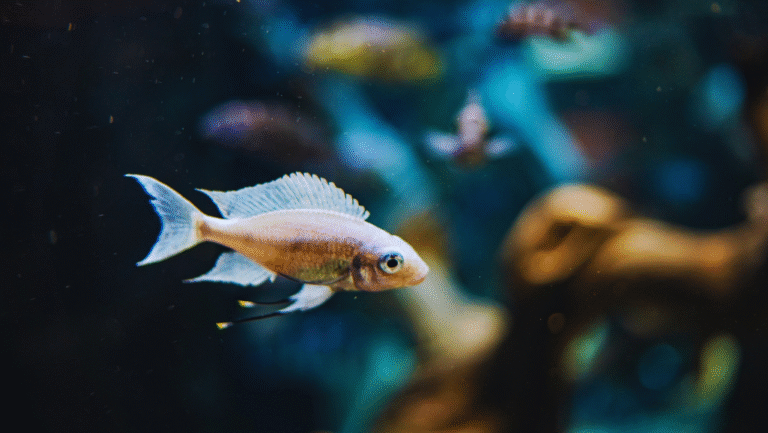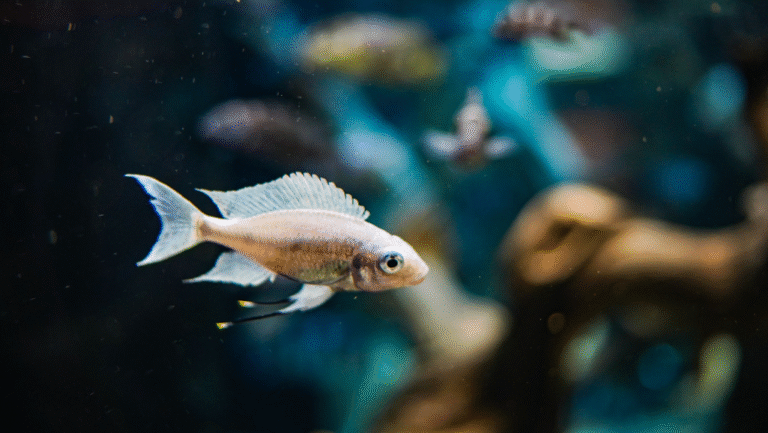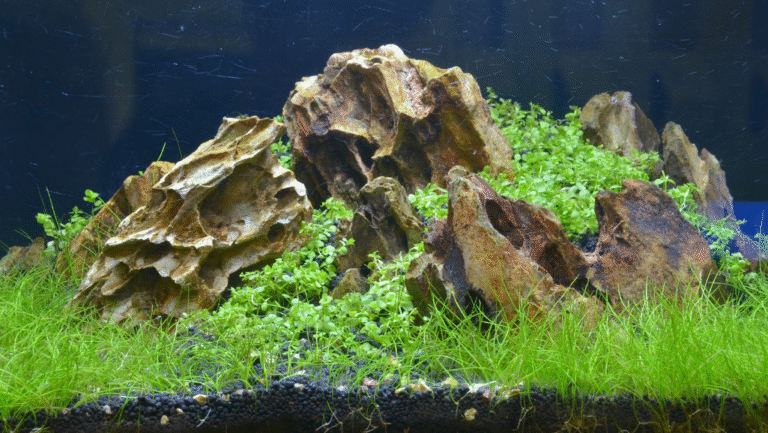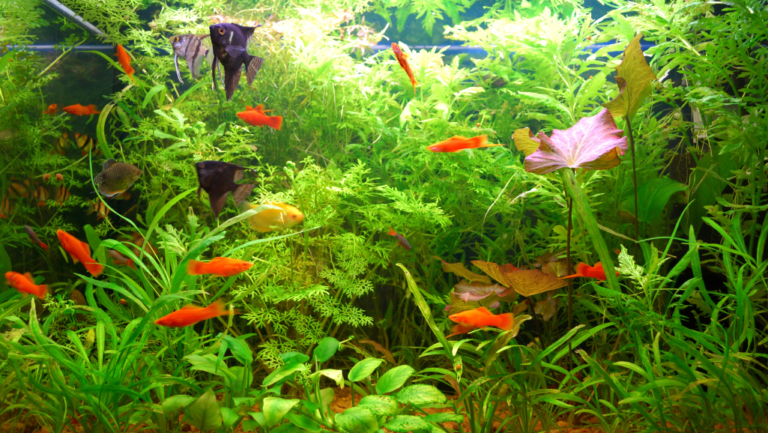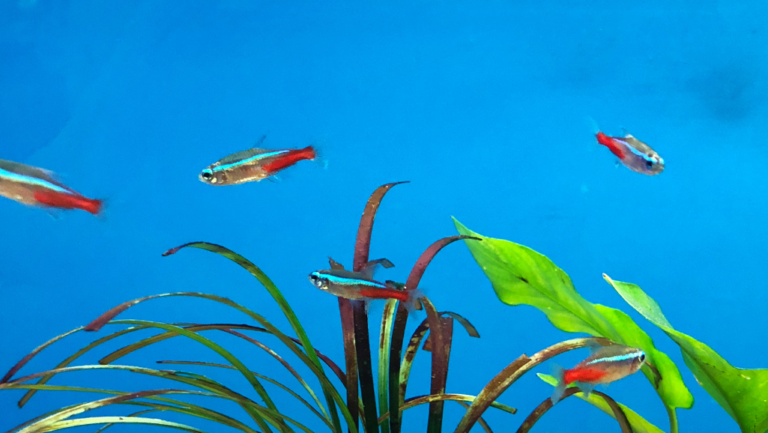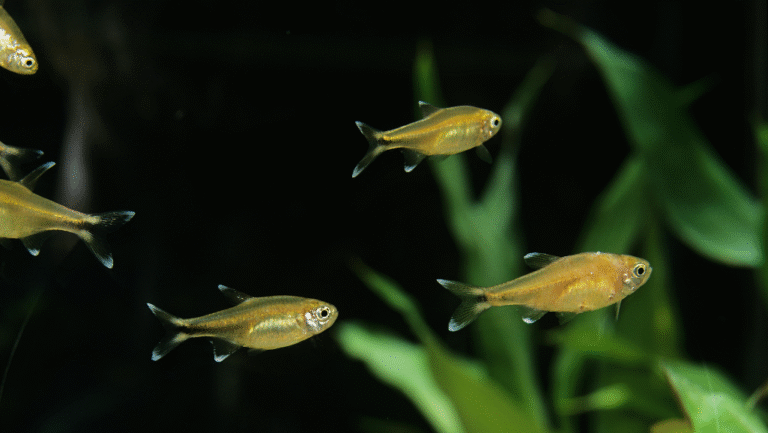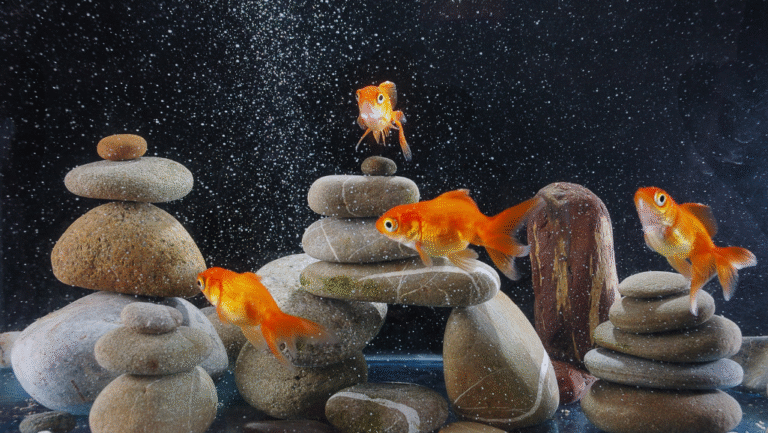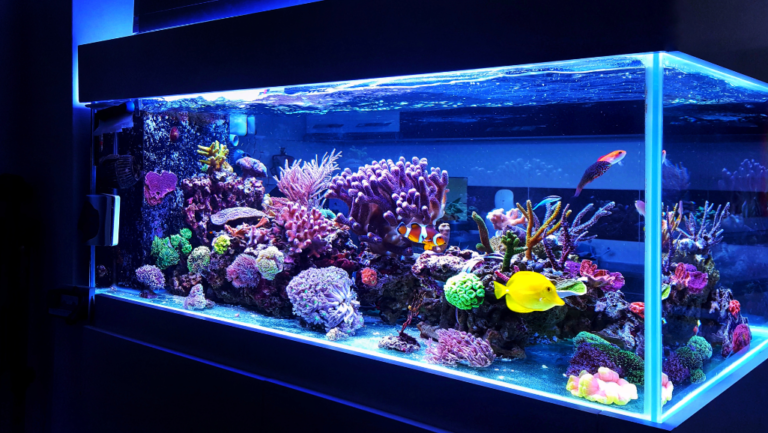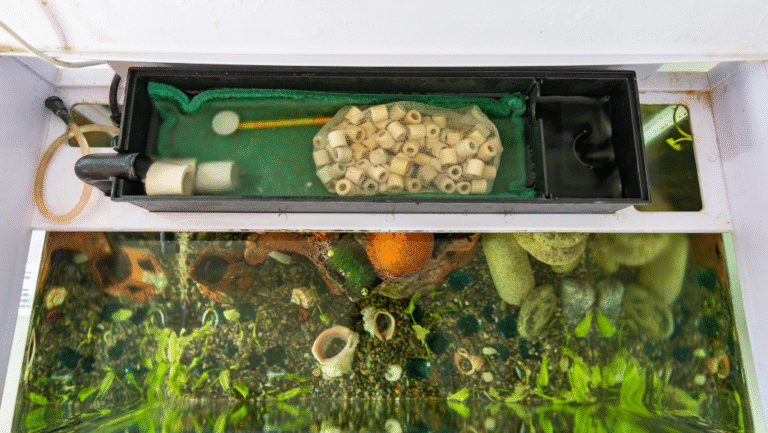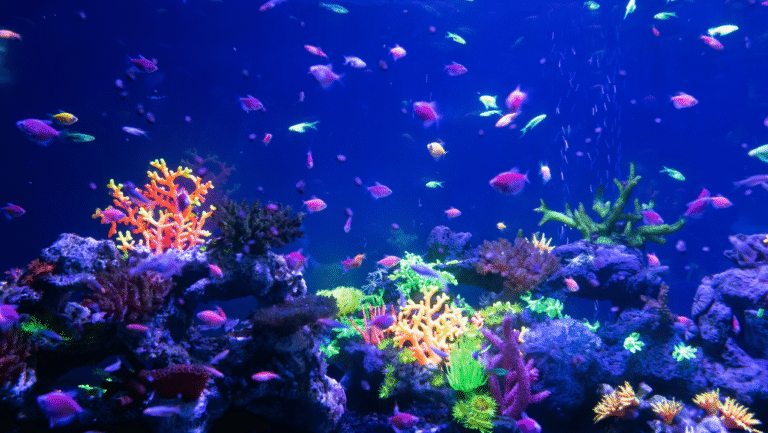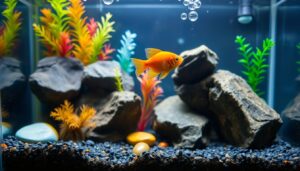Finding the is more than just about looks. It’s key to keeping your home aquarium healthy. By controlling fish growth, you keep the water clean and let fish swim naturally. Knowing how fish size changes in different aquariums is vital.
It’s also important to understand how fast fish grow. This affects the whole tank’s ecosystem. Knowing what size fish need helps avoid overcrowding and stress. It makes your tank a better place for all the fish.
To make sure your fish have room to grow, you need to know your tank’s size. Fish size and tank health are closely linked. Knowing this is important for taking good care of your aquarium.
Key Takeaways
- Assessing and managing aquarium capacity in relation to fish growth is crucial for a thriving tank.
- Estimating the ideal aquarium fish size takes into account growth potential and species-specific needs.
- Having adequate swimming space isn’t just about comfort—it’s essential for fish health and water quality.
- Understanding fish size can prevent behavioral issues by allowing for species-appropriate stocking levels.
- Factors such as filtration rate, bio-load, and oxygen exchange rates are imperative when considering fish size in an aquarium.
Understanding Aquarium Capacity and Fish Growth
When setting up an aquarium, it’s key to know how fish tank size affects fish growth. The right tank size is crucial for fish health, lifespan, and overall wellbeing. Here’s how to pick the right tank size for your fish.
Assessing Tank Size for Potential Fish Growth
Knowing how big your fish will get is vital when choosing an aquarium. For example, a fancy goldfish can grow up to 8 inches. It needs a 20-gallon long aquarium for enough space to grow and move.
An adult angelfish, 6 inches long and 8 inches tall, needs a 29-gallon tank. The tank should be at least 18 inches tall to fit its size and swimming style. These examples show why it’s important to match the fish size with the aquarium’s needs.
Factors Influencing Fish Size Expansion in Aquariums
Several factors affect how well fish grow in their tanks. Water quality is very important. Keeping nitrate levels below 40 ppm and testing the water regularly, especially after adding new fish, is crucial.
The tank’s filtration system also matters a lot. A study showed that even a small amount of ammonia can slow down growth in channel catfish. This highlights the need for a strong filter to manage waste and toxins well.
Other important factors include Oxygen levels and pH. High DOC levels can stop the nitrification process, while oxygen is essential for fish and beneficial bacteria. Good surface agitation is needed for gas exchange. These factors together affect the health and growth of aquarium fish.
Understanding these details helps aquarium lovers create a caring environment. This environment supports the full potential of their fish while keeping the ecosystem balanced and beautiful.
Calculating the Right Aquarium Fish Size
Choosing the right aquarium size is key. It’s not just about the water capacity. You must think about the needs of the fish you want to keep. The rule of thumb, one inch of fish per gallon, is too simple.
For example, fancy goldfish can grow up to 8 inches. They need a 20-gallon long tank. Angelfish, with their vertical shape, need a tank at least 18 inches tall.
African cichlids are another challenge. They need space for their social and territorial nature. Too many fish can cause stress and illness.
Keeping water quality is also crucial. Monitor nitrates, ammonia, and pH levels. A crowded tank can quickly lead to poor water quality and sick fish.
Here’s a table to help plan your tank:
| Aquarium Size (Gallons) | Recommended Fish Size (Inches/Fish Inches) | Suitable Fish Examples |
|---|---|---|
| 10 gallons | 10 inches | Small community fish |
| 20 gallons | 20 inches | Fancy goldfish, Small schools of neon tetras |
| 55 gallons | 55 inches | Medium community fish, Dwarf cichlids |
| 75 gallons and above | Flexible | Large species, Mixed communities |
Think about the layout of your tank too. Plants, decor, and filtration systems affect fish space. Introduce fish slowly to a new tank to help the filter.
Use resources like fishbase.org and seriouslyfish.com for fish size information. Following a fish tank size chart helps keep your aquarium beautiful and healthy for your fish.
Maximizing Fish Health with Adequate Swimming Space
It’s crucial to match the size of fish with their environment for their health. You must think about the fish’s size and behavior when picking the proper aquarium size for fish. Active and schooling fish need lots of room to swim. This helps reduce stress and keeps them healthy.
The optimal tank size for aquarium fish is more than just volume. The tank’s shape and dimensions matter too. A wider tank is better than a tall, narrow one for better oxygen exchange, which is key for fish health.
Key Considerations for Active and Schooling Species
When choosing fish based on size, it’s not just about fit. It’s also about giving them room to act naturally. Schooling fish need large, open spaces to thrive, so they need bigger fish tank sizes.
Importance of Surface Area for Oxygen Exchange
The tank’s surface area affects water oxygen levels. A bigger surface area means better gas exchange, which is crucial for fish breathing. Choosing a tank with more surface area helps keep the water healthy. Think about this when picking your ideal fish tank size.
| Fish Species | Recommended Tank Size | Surface Area |
|---|---|---|
| Tilapia | 50 liters | Large |
| Goldfish | 75 liters | Wide |
| Koi | 100 liters | Extensive |
| Catfish | 60 liters | Medium |
| Trout | 85 liters | Large |
In conclusion, picking the right fish tank size and shape is key for fish health. Providing enough space and good oxygen exchange improves their life quality.
Stocking Your Aquarium Responsibly
Understanding the balance between tank size and fish number is key. This balance keeps the tank healthy and prevents overcrowding. It also stops waste from building up.
Safe Introduction of Fish to New Tanks
When choosing fish for tank size, think about their current and future sizes. Start with 25% of the tank’s fish capacity. This lets the tank adjust without being overwhelmed.
This careful method is vital in managing fish growth in tank environments effectively.
Managing Bio-load and Waste Management
To keep a proper aquarium size for fish, focus on waste management. A strong filtration system is crucial. It should process at least four times the tank’s water volume per hour.
Adding live plants helps lower nitrate levels. This supports a healthy environment for fish. Regular water tests and maintenance keep the tank balanced. This prevents fish growth issues and waste buildup.
Here’s a comparison of responsible stocking strategies for fish tank fish size:
| Fish Species | Adult Size (inches) | Recommended Tank Size (gallons) |
|---|---|---|
| Goldfish | 8 | 20 |
| Angelfish | 6 (height 8) | 29 |
| Zebra Danios | 2 | 10 |
| Schooling Fish | 1-3 (per fish) | 20-30 (group) |
This table shows guidelines for fish tank capacity based on fish size and behavior. It’s key for a thriving aquatic environment. Making informed decisions about optimal aquarium size for fish is the first step to responsible fish keeping.
Deciphering Fish Tank Size Charts
Knowing the right fish tank dimensions is key for any fish lover. A fish tank size chart is more than a guide; it’s a must-have. It helps you pick the right fish for your tank, keeping them healthy and happy.
But, finding the right balance between tank size and fish number is tricky. Some think bigger tanks are always better. Yet, too big can mean more work and cost without benefits for small fish. On the flip side, small tanks can get too toxic, harming fish health.
Let’s look at a real example. For a 20-gallon tank, you can have about 20 inches of fish. This usually means ten 2-inch fish. This rule, called “one inch per gallon,” can change based on the fish’s needs.
Other things like fish tank dimensions also matter. They affect not just how many fish you can have, but also their type. For example, active or big fish need more space. Smaller tanks, like 2-gallon ones, limit you to a few small, calm fish.
| Tank Size (Gallons) | Common Goldfish | Tropical Fish |
|---|---|---|
| 5 | 1 Fish | Up to 3 small fish |
| 10 | 1 Fish | Up to 6 small fish |
| 20 | 2 Fish | 10-12 small fish |
| 50 | 5 Fish | 25-30 small fish |
| 100 | 10 Fish | 50-60 small fish |
The table shows how stocking changes with tank size. It highlights the need for a custom approach. Remember, each fish has its own needs, growth, and behavior when selecting fish based on tank size. Too many fish can cause stress, disease, and low oxygen.
Knowing your fish’s full growth is key. Big, territorial fish need more space than usual. This affects how you use the fish tank size chart.
Finally, keeping the right balance between tank size, fish number, and filtration is crucial. Make sure your filter can handle the fish’s waste. Good water quality is vital for fish health.
The Role of Filtration in Supporting Fish Size and Health
Choosing the right fish tank size and having good filtration systems are key to a healthy aquarium. There are many filters out there, each with its own way of keeping fish healthy and water clean. Biological filters are especially important because they break down harmful toxins into safer forms.
Filter Capacity and its Impact on Fish Sizes
When picking the best fish tank size, think about the filter’s ability to clean the water. Big tanks need strong filters like canister filters to keep the water clean. This lets a variety of fish sizes and species live together safely. Good biofiltration, as explained in a guide on filters, helps fish grow without getting sick from bad water.
How Filtration Affects Overall Aquarium Health
Every filter type, from Hang-on-Back to canister systems, helps keep the water healthy. For tanks with many fish, it’s important to have enough water flow and oxygen. This keeps the fish healthy and growing well.
Choosing the right aquarium size and filter is important. Think about what your fish need. The table below shows different filters and what size tank they’re best for. It helps you pick the right filter for your fish:
| Filter Type | Recommended Aquarium Size | Filtration Benefits |
|---|---|---|
| Sponge Filters | Small to Medium | Excellent Mechanical and Biological Filtration |
| Hang-on-Back Filters | Small to Medium | Good for Beginners, Easy Maintenance |
| Canister Filters | Large | High Capacity, Multi-Stage Filtration |
| Undergravel Filters | Medium | Effective Biological Filtration |
| Internal Filters | Small | Convenient for Quarantine or Hospital Tanks |
Choosing the right aquarium size and filter is key for both new and experienced fish keepers. It’s better to have too much filtration than not enough. But, a bad filter can harm your fish.
A good biological filter setup is essential for a healthy aquarium. Regular maintenance keeps the filter working well. This keeps your fish happy and healthy.
Aquarium Fish Size and Social Dynamics
Understanding the social dynamics of fish in aquariums is key to a peaceful tank. The size of fish and their behavior can greatly affect their health. It’s important to know how these factors interact.
Aggression and Territorial Behavior Based on Fish Size
Aggression in aquariums often comes from too little space. This can stress and harm fish, especially if they’re too big or dominant. For example, Cichlids need lots of room to show who’s boss without bothering others.
- Preventing aggression means picking fish that are similar in size and calmness.
- Rearranging tank decorations can help break up territories and lower fights.
Social Fish Requirements and Tank Size Considerations
Social fish like Tetras and Angelfish need a big tank. They like to swim together and show off their natural behaviors. A big tank lets them swim freely, which is good for their health and happiness.
- Schooling fish need enough space to swim and interact without feeling crowded.
- Choosing the right proper aquarium size for fish keeps the tank healthy and peaceful.
To sum up, creating a harmonious aquarium is all about matching fish sizes and understanding their social needs. Whether it’s keeping big fish from fighting or giving social fish room to play, a well-thought-out tank is essential. It must support the growth and social needs of all fish.
Determining Ideal Fish Tank Size for Different Species
The size of your aquarium is key to your fish’s health. It matters whether you have small or large fish. Knowing what each needs is essential.
Optimal Tank Dimensions for Small Freshwater Fish
Small freshwater fish are great for beginners. They are easy to care for and fit well in small tanks. Tanks from 5 to 20 gallons are perfect for them.
Species like Betta fish, Guppy fish, and Tetras do well in these tanks. They are easy to keep up with and fit in most homes.
- Betta fish thrive in at least a 5-gallon tank.
- Guppies and Tetras: ideal in a 10-gallon tank to provide adequate space for swimming.
Following the 1 inch of fish per gallon rule helps keep your tank healthy. It prevents overcrowding and stress.
Spatial Requirements for Large Aquarium Fish
Large fish like Discus, Tangs, or Oscars need bigger tanks. They require tanks of at least 55 gallons. Some need tanks over 100 gallons.
Big tanks help reduce stress and aggression. They also create a stable environment for your fish.
- Discus fish are best housed in tanks starting from 55 gallons.
- Tangs, which can grow between 6–24 inches, require tanks of 70 gallons or more.
- Oscars need substantial space as adults, with a recommended 75 gallons or larger.
Choosing the right tank size is important. It’s not just about space. It’s also about your fish’s growth and social needs. Big tanks need careful planning because of their size and weight.
In conclusion, whether you have a small or large aquarium, knowing your fish’s space needs is crucial. It’s key to their health and your success in aquarium keeping.
Choosing the Right Fish Based on Tank Size
When setting up an aquarium, a key question is: how to choose fish based on size? This choice is vital for the fish’s health and the tank’s balance. With over 25,000 fish species, picking the right one for your tank is crucial. You need to understand their behaviors, lifespans, and needs.
Choosing the right species means learning about their natural habitats and behaviors. The tank size is important because some fish need more space to swim. For example, Danios are very active and need lots of room, while Corydoras catfish prefer the bottom and need less space.
- Small tanks (10-20 gallons): Best for serene species like Bettas and Neon Tetras.
- Medium tanks (20-50 gallons): Suitable for moderately active fish such as Gouramis and Rainbowfish.
- Large tanks (50+ gallons): Ideal for vibrant, active groups or larger fish like Cichlids and Goldfish.
The importance of choosing fish based on tank size is huge. Too many fish can cause stress, aggression, and more waste. This can harm the fish’s health. Aquarium experts suggest designing your tank around the fish you want to keep for a peaceful environment.
By thinking about tank size and fish needs, you create a great environment. This also makes your experience as an aquarist better. A well-designed aquarium looks good and keeps your fish healthy.
Conclusion
Finding the best tank size for aquarium fish is crucial for their well-being. It’s not just a nice thing to do; it’s essential. Studies show that smaller tanks can lead to toxin buildup, harming fish.
This highlights the importance of understanding fish growth in aquariums. The right tank size is key to their health. It’s about creating a proper home for them.
Goldfish often live in small bowls, which is not ideal. A 550-liter tank is much better. This shows how important it is to know the right tank size.
Goldfish in good conditions live longer and healthier. This teaches us the importance of proper care. It’s not just about size but also about the environment.
Nutrition and water quality are just as important as tank size. It’s not just about avoiding overcrowding. It’s about giving fish enough space to grow.
To create a great environment, hobbyists need to focus on filtration and water changes. This way, they can ensure each fish has enough room. And the whole aquarium can thrive.
